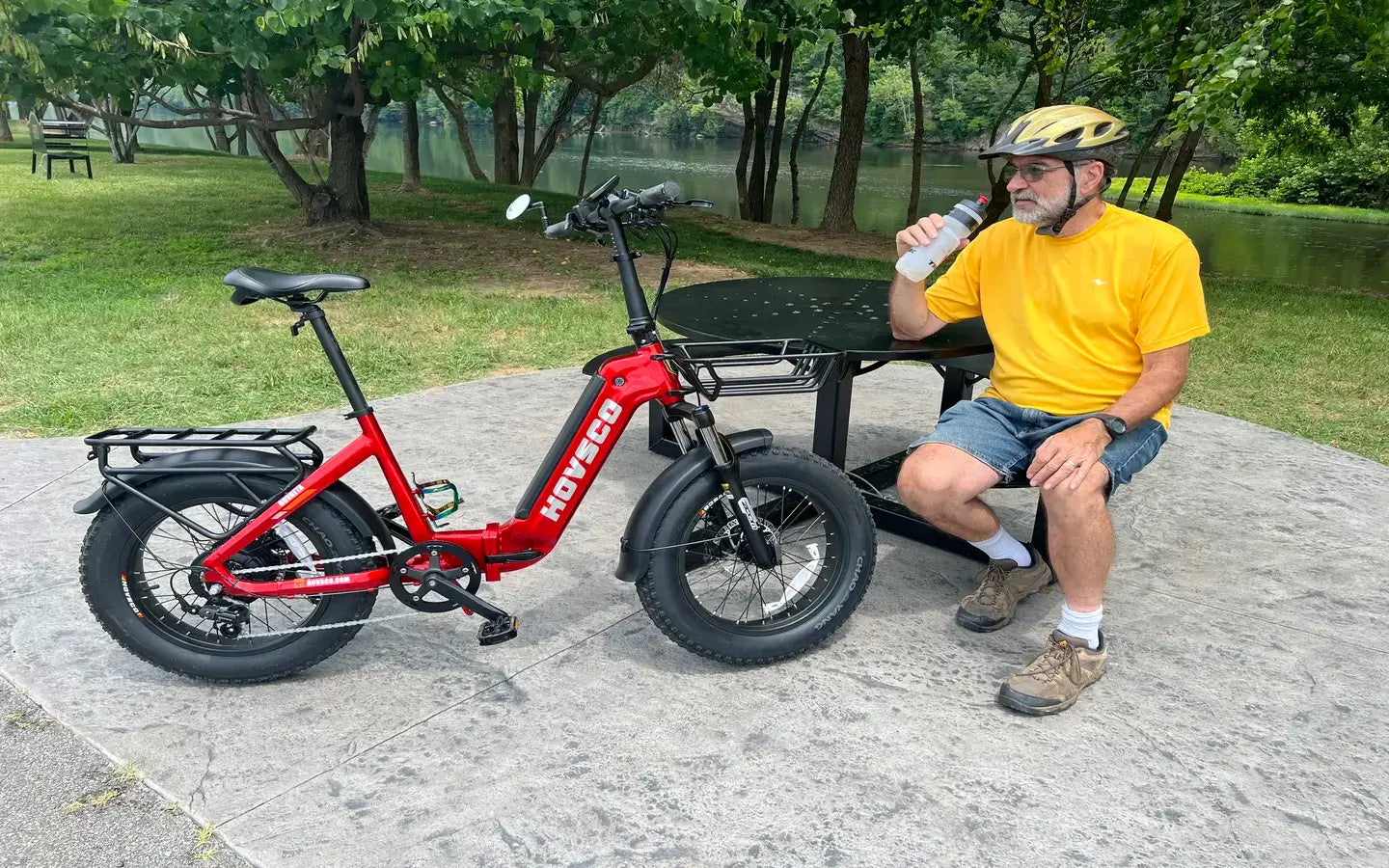
- by HOVSCO USA
How Can You Use an E Bike in the Rain Safely and Effectively?
- by HOVSCO USA
You can use an e bike in the rain, as most e bikes are water-resistant and designed for wet conditions. However, avoid submerging your e bike, check its IP rating, and always dry it after riding. Using an e bike in the rain requires extra caution, proper gear, and routine maintenance for safety and longevity.
Most modern e bikes are built with sealed motors and batteries, offering water resistance that allows you to use an e bike in the rain without damaging key components. Check your e bike’s IP rating to ensure it meets water resistance standards. Avoid deep puddles or flooding, as full submersion can harm electronics and void warranties.
Chart: Common IP Ratings for E Bikes
| IP Rating | Water Resistance Level | Typical Usage |
|---|---|---|
| IPX4 | Splash resistant | Light rain, wet roads |
| IPX5 | Resistant to water jets | Moderate rain, washing |
| IPX6 | High-pressure water jets | Heavy rain, short exposure |
Before using an e bike in the rain, inspect tires for grip, ensure brakes are responsive, and check battery seals. Equip your e bike with fenders to reduce splashing and install lights for visibility. Lower tire pressure slightly for better traction. HOVSCO recommends routine pre-ride checks to maximize safety and performance in wet weather.
When you use an e bike in the rain, slow down, avoid sudden braking, and steer clear of slippery surfaces like painted lines, metal grates, and tram tracks. Wear visible, waterproof clothing and always use front and rear lights. Never ride through water deep enough to submerge your motor or battery, and avoid heavy storms or lightning.
Rain increases wear on chains, brakes, and electronics. After using an e bike in the rain, wipe down the frame, dry the battery contacts, and lubricate the chain. Regular maintenance prevents corrosion and extends the lifespan of your e bike. HOVSCO recommends a thorough cleaning after every wet ride as part of a robust maintenance routine.
E bikes with higher IP ratings (IPX5 or above) are better suited for rainy conditions. HOVSCO e bikes are engineered for urban jungles, trail exploring, and daily commutes, often featuring robust water resistance. Always verify your model’s rating and consult the manual for wet-weather usage guidelines.
Chart: E Bike Models and Water Resistance Features
| Model Type | Typical IP Rating | Key Features for Rain |
|---|---|---|
| Urban Commuter | IPX4–IPX5 | Sealed electronics, fenders |
| Trail Explorer | IPX5–IPX6 | Enhanced seals, grippy tires |
| All-Terrain | IPX5–IPX6 | Heavy-duty build, waterproof |
While you can use an e bike in the rain, avoid riding in heavy storms or through deep water. Submersion can short-circuit electronics, damage batteries, and compromise safety. If your e bike gets soaked, turn it off, dry all components thoroughly, and inspect before the next ride. Never charge a wet battery.
Protect your e bike by parking under cover, using a rainproof cover, and removing the battery if leaving it outside. After using an e bike in the rain, dry the battery contacts and store the battery indoors. HOVSCO emphasizes the importance of battery care for long-term reliability and safety.
Avoid using an e bike in the rain during thunderstorms, extreme weather, or when flooding is possible. If visibility is poor or roads are unsafe, postpone your ride. Even with water resistance, prolonged exposure to heavy rain can lead to component wear and electrical issues.
When selecting gear for using an e bike in the rain, prioritize waterproof panniers, high-visibility rainwear, and a quality helmet with a visor. Choose e bikes with high IP ratings, sealed electronics, and robust fender systems-features found in many HOVSCO models. Always check your e bike’s manual for rain-specific guidelines, and invest in a portable drying kit for post-ride care.
“At HOVSCO, we engineer our e bikes for real-world conditions, including rain. Riders can confidently use an e bike in the rain thanks to advanced water-resistant designs. However, we always recommend routine maintenance and proper gear to ensure every wet-weather ride is safe, comfortable, and enjoyable.”
Can you use an e bike in the rain safely?
Yes, you can use an e bike in the rain if it has adequate water resistance and you follow safety precautions.
What should I avoid when using an e bike in the rain?
Avoid deep water, heavy storms, and leaving your e bike outside for extended periods.
How do I dry my e bike after riding in the rain?
Wipe down the frame, dry battery contacts, and lubricate the chain as soon as possible.
Does rain void my e bike warranty?
Check your manufacturer’s policy; improper use or submersion may void warranties.
Why choose HOVSCO for wet-weather riding?
HOVSCO e bikes are designed with water resistance, safety, and rider comfort in mind, making them ideal for rainy conditions.
Share:
How Can You Use an E-Bike During the Winter Safely and Comfortably?
How to Ride Your Ebike Safely at Night: 7 Essential Tips